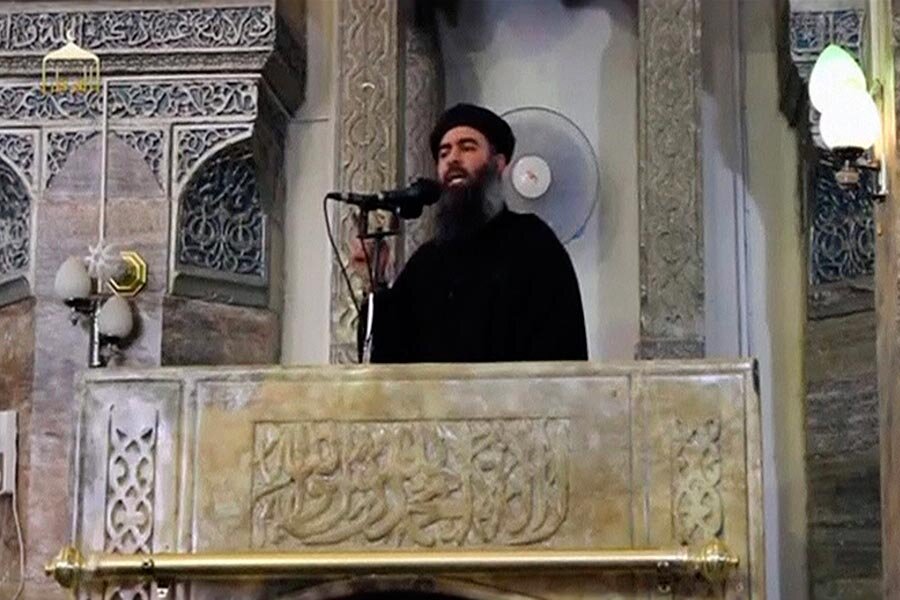ISIS leader Baghdadi cementing reputation as the new Hulagu Khan
Loading...
In the early 13th century, a military force the likes of which the world had never seen – a holocaust on horseback – came pouring out of the steppes of central Asia and changed the world in ways that echo to this day. It's an episode of relevance to the salafi jihadi ideology that drives Abu Bakr al-Baghdadi, the self-styled caliph of the Islamic State, whose men burned alive Jordanian pilot Muath al-Kassasbeh for all the world to see.
The brutality of the Mongols, first led by Ghengis Khan, reached its apex under his grandson Hulagu Khan. He and his horde rode west out of the steppes, first headed for Persia and then on to the seat of the Abbasid caliph in Baghdad. They were guided by one simple rule: Spare cities that submit, enslave and destroy all those that resist.
Baghdad was one of the globe's only true cities of art and learning at the time. The city had been the seat of Islam's caliph, the ruler of the faithful, for 500 years, and its tiled fountains inspired many of the tales that came to be compiled in "One Thousand and One Nights."
In 1257, when Hulagu's emissaries reached the gates of Baghdad and demanded surrender, the caliph Mutasim, a dissolute leader who preferred poetry and music to hunting and fighting, dismissed them, certain that all the region's Muslims would rally to his side if they dared attack. Baghdad's fate was sealed.
In 1258, Hulagu and his army sacked the city in an orgy of bloodletting that Iraqi mothers still whisper as a warning at the bedsides of their children. He burned the palaces and libraries, and the riverbanks were stained with blood. Heads on pikes were hardly the worst of it: torture of captives was routine. Those spared were enslaved.
There are many competing accounts of how Hulagu tortured Mutasim to death. The most commonly accepted is that he had him trampled by horses. The surrounding area's sophisticated irrigation network was fouled, and the city and environs did not recover for centuries.
But Hulagu's legacy lives on.
In 2002, as the US prepared to invade Iraq, Al Qaeda's Osama bin Laden reached back to the era – in a reference that mystified most American listeners but whose meaning was crystal clear to Iraq and its neighbors – when he said that then-Vice President Dick Cheney and Secretary of State Colin Powell had "killed and destroyed more in Baghdad more than Hulagu of the Mongols."
The Taymiyyah influence
The horde moved on to Damascus and Aleppo with predictable results. It was in the region of what's now Syria that the Islamic jurist now known as Ibn Taymiyyah was born in 1263. His family fled the sacking of his hometown by one of Hulagu's successors in 1270 and he grew up in Damascus, becoming both a renowned and famously harsh and bloodthirsty interpreter of Islamic law. It was hardly an accident that the murderers of Lt. Kassasbeh found the Islamic justification for burning their victim alive in an 800-year old fatwa from Ibn Taymiyyah.
Taymiyyah lived in a time of twin threats – the Crusades from Europe and the Mongols to the east. He particularly hated the Mongols, whose rulers at this time had nominally converted to Islam but who were entirely too accepting of both Christians and Shiite Muslims for his taste. Their crimes and depredations led him to create an expansive definition of jihad that resonates with groups like IS today.
Since the Mongols were Muslims, was it possible to put them all to death as if they were infidels? In his accounting, unjust rulers governing with what he considered man-made, rather than divinely provided, laws, were no Muslims at all. Instead, they were apostates and monsters.
His practice of declaring Muslim rulers and followers takfir – cast out, apostates – is embraced by Al Qaeda, offshoots like the Islamic State, and similar groups today. And his views, shaped by the violent and troubled time he lived in, are now shaping the violence of the Islamic State.
But while Islamic State's Baghdadi and his followers believe they're fighting the Hulagus of the modern age – unjust local rulers and their foreign sponsors – they appear to have become the thing they hate. Their apparent hope is that televised acts of torture, the beheading of captives, the persistent reports of them selling captured women and girls into sexual slavery, will cow those they oppose, just as Hulagu's torture and mass slaughter of defeated cities cowed future enemies. Yesterday, the UN Committee on the Rights of the Child complained of "systematic sexual violence" perpetrated on children by IS.
"We are really deeply concerned at torture and murder of those children, especially those belonging to minorities, but not only from minorities," the committee's Renate Winter told reporters. "We have had reports of children, especially children who are mentally challenged, who have been used as suicide bombers, most probably without them even understanding."
Unfortunately for IS, their capacity to spread mayhem is far more limited than the Mongols were, and their horror shows are stiffening the spines of regional governments. That's most strongly demonstrated in Jordan, where there had been misgivings about the country's support for the US-led campaign against IS in Syria.
Jordanian airstrikes were suspended after Kassasbeh crashed in Syria and was captured in December, and negotiations were opened seeking his release. Those negotiations, as it happens, were carried out in the utmost bad faith by IS, since it now appears that they'd burned Kassasbeh alive by Jan. 8.
The dead pilot's father, Saif Kassasbeh, who was urging a deal be struck and that Jordan stay out of an unnecessary foreign war as recently as a week ago, is now demanding vengeance. He says that yesterday's execution of two jihadis that had been on death row in Jordan since 2006 was far from sufficient. Mr. Kassasbeh called for IS to be "annihilated."
Jordan's King Abdallah and many of his subjects appear to agree on that goal, and the country resumed airstrikes today, with the Jordanian press reporting that the Syrian city of Raqqa, which is under Islamic State control and is believed to be where Kassasbeh was murdered, was the first to be hit.
Baghdadi has held out a promise of a new Islamic golden age to his disciples once victory is achieved. But to residents of the region he more and more looks not like a just caliph of old, but the Hulagu Khan of today.








